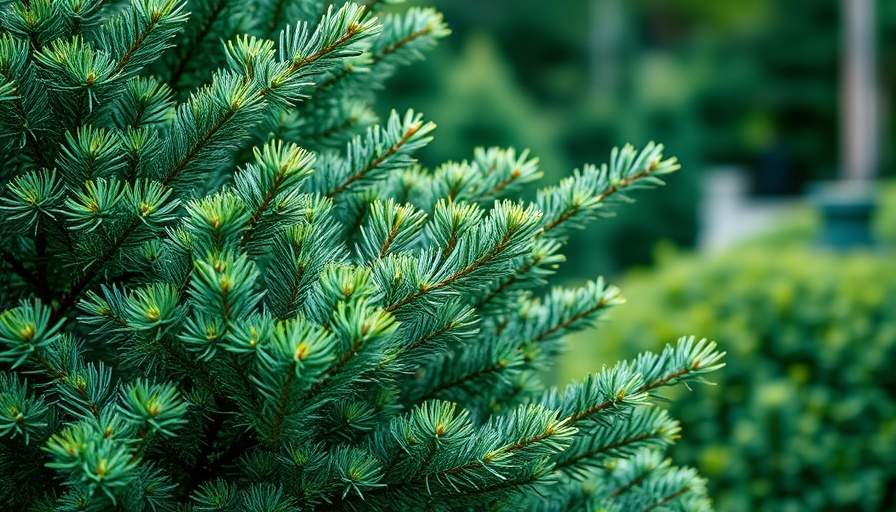
Why Japanese White Pine is a Gardener's Favorite
Japanese white pine (Pinus parviflora) has captivated the hearts of garden enthusiasts for ages. Its striking long green needles, often twisting and curling, reveal a silvery-white underside that enchants any onlooker. This evergreen beauty boasts an aesthetic that strikes a perfect balance between ruggedness and refinement, making it an ideal centerpiece in gardens.
The Allure of Its Unique Features
One of the standout features of the Japanese white pine is its irregular shape, which evokes the intriguing look of an overgrown bonsai. When younger, this tree's neat conical structure transforms, as it ages, into a more open crown with a casual elegance that commands attention. Some cultivars can maintain a modest height of merely 15 feet, allowing them to fit beautifully into various garden designs. Its contrasting gray-black bark, which forms plates with age, adds a dramatic flair to any landscape.
Essential Gardening Tips for Growing Japanese White Pine
To successfully grow a Japanese white pine, understanding its natural habitat is crucial. Native to mountainous regions in Japan, this tree is well-suited for sandy to loamy, well-draining soils. Japanese white pine prefers slightly acidic to neutral soils, ideally with a pH level between 5.5 to 7.0. Like many landscape trees, it thrives best under full sun, making it perfect for accentuating sunny garden spots.
Choosing the Right Cultivars
When selecting cultivars of Japanese white pine for your garden, it’s essential to consider your available space and desired aesthetic. Some popular options include the 'Tanyosho' pine, which showcases longer needles, or the 'Glauca' variety, known for its striking blue-green foliage. Each cultivar has unique characteristics that can complement various garden styles—be it a classic Japanese zen garden or a modern backyard retreat.
Maintenance and Care
Caring for Japanese white pines involves more than just regular watering. A crucial part of their maintenance is ensuring proper pruning, particularly to encourage airy growth and to remove any dead or diseased branches. Typically, these trees can fend off pests and diseases, but vigilance is essential to prevent infestations. Look out for common garden pests like the pine needle scale, which can threaten the health of your tree.
Propagating Your Japanese White Pine
For the adventurous gardener, propagating your own Japanese white pine can be an exhilarating side project. The trees can be propagated through seeds, cuttings, or grafting. Collect mature cones in the fall, and after extracting the seeds, sow them in a well-draining seed mix. Patience is key, as these trees can take 25-50 years to mature fully, depending on the environmental conditions and cultivar chosen.
Conclusion: Build Your Dream Garden with Japanese White Pine
Integrating Japanese white pines into your garden adds not only beauty but also creates a serene atmosphere, perfect for meditation and relaxation. As you embark on your gardening journey, consider the tips provided for growing and caring for these trees. Whether you're planning a detailed garden design, cultivating a bonsai, or simply cherishing nature's calm, the Japanese white pine is the ticket to creating an enchanting outdoor oasis.
 Add Row
Add Row  Add
Add 




Write A Comment